Guide to Reverse Osmosis Systems

Guide to RO Systems
Reverse osmosis systems have become a staple in providing clean, purified water for households and freshwater and saltwater aquariums. This advanced technology filters out contaminants and impurities, offering a reliable source of drinking water.
Understanding how reverse osmosis works, what to consider before making a purchase, and how to choose the right tank for your needs can better enhance your water purification process.
In this guide, the Air, Water & Ice team will help you navigate you through the complexities of reverse osmosis systems, ensuring you make an informed decision for your home and aquarium water purification needs.
How Does Reverse Osmosis Work?

Reverse osmosis (RO) is a filtration process that removes impurities from water by using pressure to force water molecules through a semipermeable membrane. The membrane acts as a barrier, allowing only water to pass through while rejecting larger molecules such as dissolved salts, bacteria, and chemicals.
The RO Process
The process begins when water is pushed against the RO membrane under pressure. This pressure must be higher than the natural osmotic pressure to reverse the flow of water. As water passes through the membrane, contaminants are left behind and flushed away, resulting in clean, purified water.
The effectiveness of an RO system depends on several factors, including the quality of the pre-filters, membrane, water pressure, and the type of contaminants present in the water.
What to Know Before Buying a Reverse Osmosis System?
Before purchasing a reverse osmosis system, it's crucial to consider several factors to ensure it meets your water purification needs.
Water Supply Quality
First, you should understand the quality of your water supply. Testing your water will reveal the contaminants present and help you choose an RO system that can effectively remove them.
Water Pressure
Water pressure is another important consideration. RO systems require a certain level of pressure to function efficiently; if your home's water pressure is low, you may need to install a booster pump.
Additionally, you will need to evaluate the system's water production rate and storage capacity to ensure it meets your daily water usage needs.
Maintenance Requirements
Your RO system will require regular maintenance. This will include membrane and filter replacements.
Understanding these requirements will help you keep your RO system functioning optimally.
How to Choose the Right Reverse Osmosis Tank
The reverse osmosis tank is a critical component of the RO system, storing purified water until it's needed. Choosing the right tank size and type is essential for ensuring a consistent supply of purified water. Materials and pre-charge pressure are also important considerations.
Tank Sizing & Materials
Tank size should be based on your daily water usage. A larger household or one with higher water needs may require a bigger tank to ensure an adequate supply of purified water.
Our RO Systems

When choosing the right RO system for your home or aquatic tank, it's helpful to have a wide range of options to choose from which match your production needs and overall budget.
Air, Water & Ice's RO systems include our 5 Stage Drinking Water COP RO System. This systems uses a FilmTec 50 GPD membrane for truly great drinking water quality and superb production rates.
We also carry the Extra Duty RO Unit with the permeate pump to add higher pressure and saving you up to 50% of the water wasted by normal tap water systems.
If you need an under-the-sink RO system, we carry the mini and max RO systems. The smaller mini unit is the perfect solution for smaller spaces like under the sink, and for bars and apartments. You can customize both the mini and max with your faucet, tank size, and the SV-6 part, braided hose adapter, garden hose adapter, and hose & Y combo part.
The Mighty Mite RO System 50GPD is a small unit that can be custom configured to fit many applications like apartments, boats, campers, and RVs, just to name a few. To use, you can simply attach it to your sink faucet and enjoy the pure RO water.
And lastly, boost your drinking water PH by adding magnesium, calcium, and trace minerals with our 4-stage Restructuring POD +PH Boost Filter +Magnesium +Calcium product.
The Pros & Cons of RO Systems
Despite the widespread use of reverse osmosis in municipal water treatment and the general safety of tap water in the U.S., many homeowners prefer to take an extra step in water purification to ensure their drinking water is free from contaminants. Let's take a look at the pros and cons of investing in a RO system:
Pros of RO Systems
Key advantages of employing a reverse osmosis water purification system include:
Comprehensive Contaminant Removal Reverse Osmosis
RO systems stand out as one of the most effective methods for removing water pollutants, capable of eliminating up to 99% of harmful substances such as lead and asbestos, along with 82 other potential contaminants. This technology has been instrumental in lifting boil water advisories globally by providing a safe drinking water solution where conventional filtration systems failed. The fine-scale filtration provided by reverse osmosis membranes allows for the removal of both large particles and dissolved minerals, purifying water to its essential molecules.
Environmental Benefits and a Safer Alternative to Bottled Water:
For those relying on bottled water, reverse osmosis systems present a more sustainable and safe alternative. Despite the high water consumption of reverse osmosis systems, the environmental impact is considerably lower compared to the accumulation of plastic bottles in landfills and the pollution generated during plastic production.
Essential for Specific Needs
The ultra-pure water produced by reverse osmosis, although might seem excessive for homes with access to clean tap water, is ideal for specific uses. Culinary professionals have noted that food prepared with reverse osmosis water tastes better due to the absence of minerals, including fluoride added to municipal water supplies.
Of course, aquarium enthusiasts also prefer reverse osmosis water for their tanks to provide their aquatic pets with the cleanest water possible, devoid of human pollutants and added minerals.
Cons of RO Systems
Despite the efficiency and safety of reverse osmosis water purification, there are notable drawbacks. Primarily, even though these systems are advantageous for municipal or commercial uses, they entail substantial costs and consume a greater volume of water. Let's take a look:
High Water Consumption Compared to Output
One drawback of reverse osmosis purification systems is their need to produce drain water. Some RO systems can waste between three to twenty times the amount of water they purify. We configure all of our systems to get a maximum 3:1 waste to pure water ratio, drastically minimizing the excessive drain water without affecting the performance of the filters. Our systems with a permeate pump will further reduce drain water by 50%.
Loss of Beneficial Minerals and Reduced pH Level Reverse Osmosis Systems
Are so effective at filtering water that they also remove beneficial minerals like calcium, magnesium, potassium, and municipally added fluoride, which benefits dental health. If you would like to add back these beneficial minerals, please see our Restructuring POD +PH Boost Filter +Magnesium +Calcium!
High Initial and Maintenance Costs
Installing a reverse osmosis system is a significant financial investment. Home installation can be complex and may require retrofitting, which is not always a straightforward DIY project. Moreover, maintaining these systems to ensure they operate safely and effectively can be expensive, often necessitating professional servicing.
For more information on pros and cons of choosing an RO system, please read more in the article here.
Choose Air, Water & Ice for RO Systems
By understanding how reverse osmosis systems work, what to consider before buying one, and how to choose the right tank, you can ensure a continuous supply of clean, purified water for your home or business.
With the right system in place, you can enhance your water quality and enjoy the health benefits of clean, purified water. At Air, Water & Ice, we've been proudly serving our RO customers since 1982.


 RODI SYSTEMS
RODI SYSTEMS
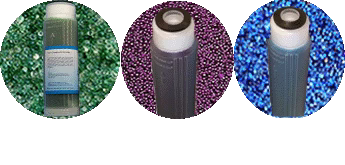 DI RESIN - DEIONIZATION
DI RESIN - DEIONIZATION
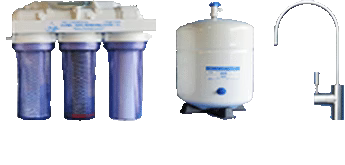 RO SYSTEMS
RO SYSTEMS
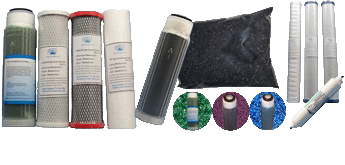 FILTERS
FILTERS
 MEMBRANES
MEMBRANES
 WATER TESTING
WATER TESTING
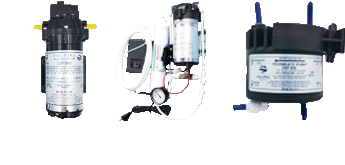 RO/RODI PUMPS
RO/RODI PUMPS
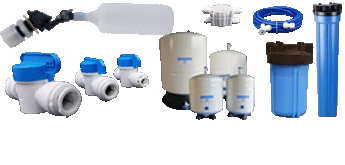 PARTS & FITTINGS
PARTS & FITTINGS
 FAQ
FAQ
Leave a comment